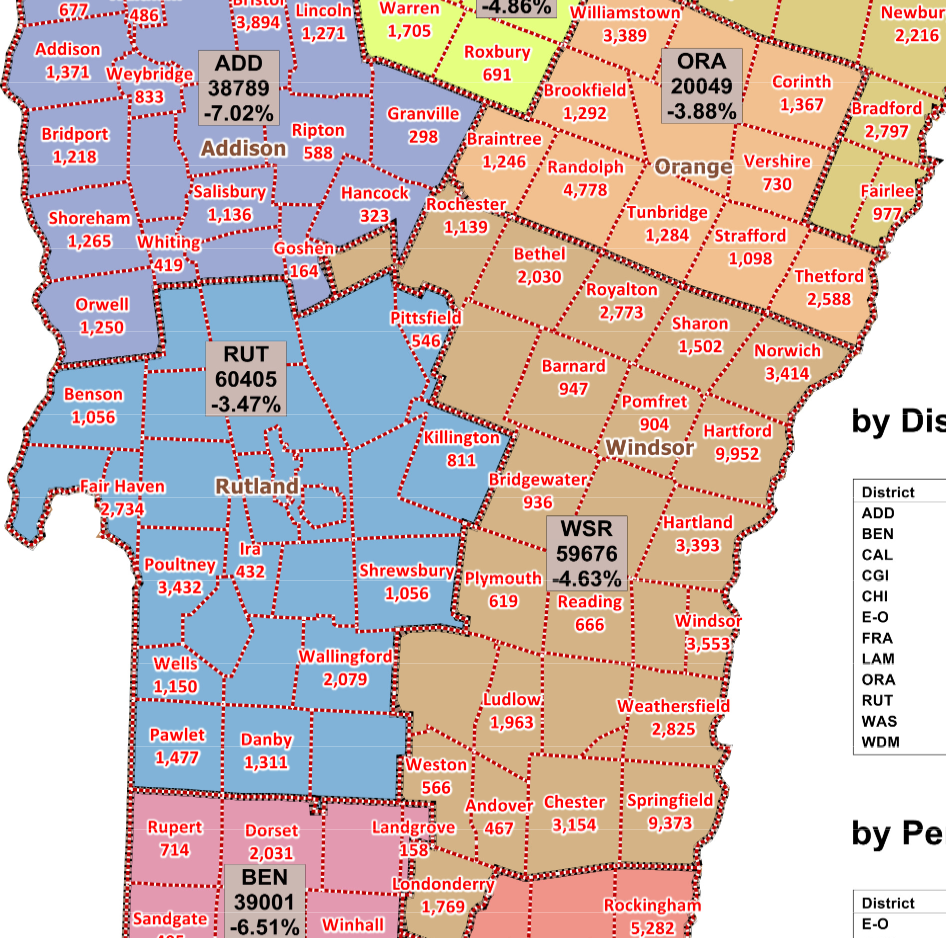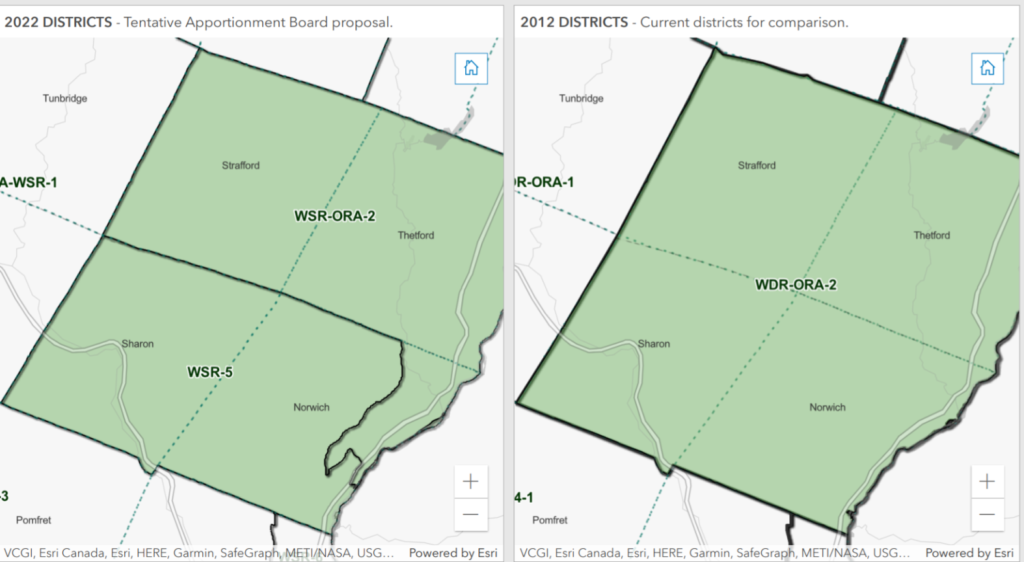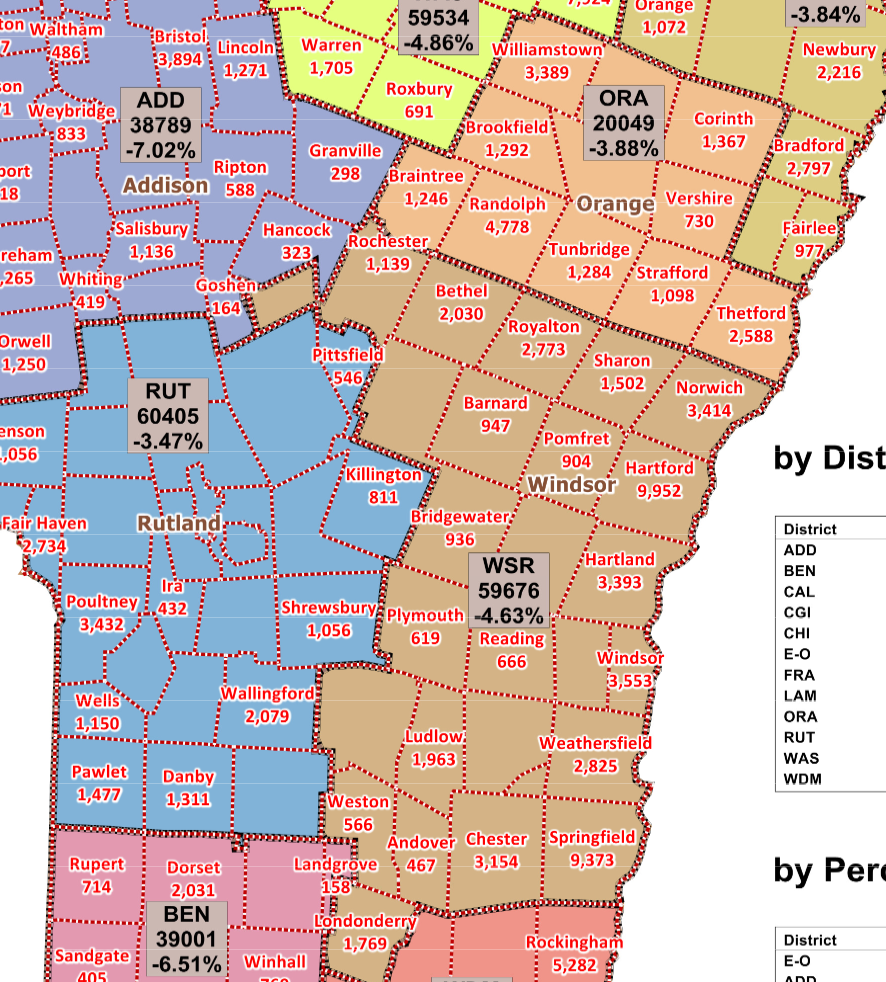By a 4-3 vote, the Vermont Legislative Apportionment Board (LAB) opted to recommend single-member House and Senate districts across the State. If approved by the General Assembly (and that is a big ‘if’), most of the Town of Norwich would lose all incumbents currently representing its population in the Legislature.
As explained by Lola Duffort, a reporter for VTDigger, in a recent article:
The General Assembly must redraw its boundaries every 10 years, after the new U.S. census is published, to ensure compliance with the one-person, one-vote principle. The seven-member Legislative Apportionment Board is charged with taking a first crack at how those new maps should look.
Currently, the Vermont House’s 150 members are elected from 104 districts, which either have one or two representatives apiece. In the upper chamber, 30 senators are elected from 13 districts, which either have one, two, three or — in the case of the Chittenden County district — six senators each.
Maps now forwarded to lawmakers for their consideration propose 150 single-member districts on the House side and 30 single-member districts on the Senate side.
Panel narrowly recommends single-member House and Senate districts
Senate
Norwich, at present, is one 26 towns in the WSR district. The towns are all in Windsor County, except for Mt. Holly from Rutland County and Londonderry from Windham County. See map below. A list of cities and towns in each Senate district is here.

Three Senator represent the WSR district. They are: Alison Clarkson of Woodstock, Dick McCormack of Bethel, and Alice W. Nitka of Ludlow, all Democrats.
LAB Proposal
Under the LAB proposal, Norwich is in the seven-town ORA-WSR-E district, with a single senator. The other six towns are Barnard, Hartford, Pomfret, Sharon, Strafford and Thetford. See the green portion of the map below.
Unlike the House redistricting, the LAB does not solicit comment from Boards of Civil Authority on the Senate map.

Also, one striking result of the LAB map is that none of the sitting Senators reside in the new Norwich district. Moreover, two live in one other district. As a result, they would run against each other, at least in the primary. Had the LAB substituted Woodstock for Thetford and Strafford, that situation is avoided. But map drawing is never that simple.
Further, both the “liberal Vermont Public Interest Research Group and the conservative Ethan Allen Institute” support single-member districts according to a VTDigger Commentary by John Freitag of South Strafford.
However, WSR Senator Clarkson is not so sure. “There are reasons to keep Senate districts aligned with counties – as many legislative interests and concerns are regional/county based,” she told me in an email. “I am not sure dividing up county representation serves Windsor County.” Moreover, the Senator serves on the the Senate Government Operations Committee which reviews the LAB proposal.
House
As detailed in an earlier blog post, the LAB proposed to split the current four-town Windsor-Orange 2 district into two House districts, each with one representative. To balance population, the LAB split Norwich into the two districts. However, the BCA’s for Norwich, Sharon, Strafford and Thetford were against the change from a four-town district. In addition, the incumbent Representatives, both from Thetford, have panned the proposal. Nonetheless, the LAB moved forward with its concept.



Rejecting the Norwich BCA opinion? Shocking.
This will be interesting to see how it plays out. May give opportunities to new voices, demographics and perspectives and create a shift from present septuagenarian representation both locally on committees and in the State Senate.